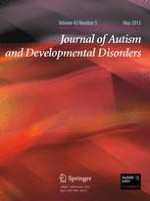01-05-2012 | Original Paper
WISC-IV Profile in High-Functioning Autism Spectrum Disorders: Impaired Processing Speed is Associated with Increased Autism Communication Symptoms and Decreased Adaptive Communication Abilities
Gepubliceerd in: Journal of Autism and Developmental Disorders | Uitgave 5/2012
Log in om toegang te krijgenAbstract
Changes in the Wechsler Intelligence Scales for Children-IV (WISC-IV) may affect the IQ profile characteristic of autism spectrum disorders (ASD). Moreover, the association of particular component cognitive abilities (unlike overall IQ) with symptomatology and adaptive functioning in ASD remains unclear. This archival study characterizes the WISC-IV IQ profile among 56 high-functioning (IQ > 70) children with ASD and correlates WISC-IV performance with ASD and ADHD symptomatology and adaptive functioning. The ASD WISC-IV profile included strengths on Matrix Reasoning and Similarities, weaknesses on Comprehension (which correlated negatively with social symptoms) and the subtests comprising the Processing Speed Index (Coding, Symbol Search). Processing speed task performance correlated negatively with communication symptoms and positively with communication abilities, indicating its importance to functional outcomes in ASD.
